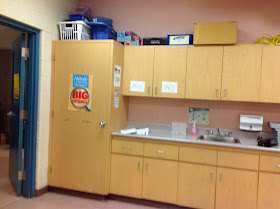We recently completed our first set of Literature Circles. Actually, I don't really like the term "Literature Circles" because it is so closely linked with those "roles" that teachers love to squeeze children into. You know what I mean:
Word Solver,
Vocablulary Enricher,
Illustrator,
Summarizer,
Questioner, etc. I first ran into these roles while I was still a Primary teacher. My son was in the Sixth Grade, and he was in a Literature Circle. He was sitting in front of the computer with his novel on his lap. He was getting pretty upset, just staring at the screen. I asked him what the problem was and he said, "I'm the Vocabulary Enricher for this chapter, so I have to find a word in here that I don't know, look it up, and explain it to my group. But I know all of the words already, so I don't know what to do!" I suggested that he find an
interesting word to share, and not worry about whether or not he already knew what the word meant. But he was of the belief that this particular chapter had nary an interesting word in the entire text! Then he said "Next week will be even worse! I will be the Illustrator, and I HATE drawing!".
At that point my daughter, who was in Grade Twelve at the time, came down the stairs and said, "You know Jordan, teachers kill everything good about reading". I made a vow then and there that I would never make students do something with a text that I wouldn't want to do myself.
Now that said, I had dinner with my friend Terri the other night, and she told me how she explains to her students that when we read for pleasure we don't study the text, but when we are reading in school, we are learning, so we need to
study the text. So there are some things we do in school that we would not do when reading during our free time. I think she has a point, but I also think that sometimes what we make students do with their novels just becomes busy work.
That is why I like the Reciprocal Teaching so much. It just has four simple objectives to focus on, and the goal is for all of the students in the group to do all of the tasks. So I thought that I was being pretty reasonable with my own students when two different conversations enlightened me. First, I have a group that is reading "
Who is Frances Rain ?" by Margaret Buffie. This is a group of strong readers, all girls, who are loving their novel and their reading group (I tend to call them "Book Club Groups" because I am in a Book Club and I love my Book Club). I gave them their template for the Reciprocal Teaching, and they GROANED out loud. I asked what the problem was, and they said they hate filling in the sheet, that they just want to talk about the book. I explained that the sheet helps them to stay on topic and not go off on tangents. They agreed that it did help them stay on topic and go deeper into the book. BUT, they said, they don't need to write anything down, they just need the anchor chart that is up on the wall. So, I agreed, they didn't have to have a written product.
I spoke to our Literacy Coach, Teresa, about this afterward because this compromise made me feel like perhaps we weren't doing it "right". But she assured me that this was in fact a good thing, ultimately, the goal of Reciprocal Teaching is to promote rich and meaningful conversation and reflection. But in the back of my mind I was still wondering- how do we keep them accountable?
The next day, I asked the students to describe one of the main characters in their novels, and I was floored by the depth of the responses I got from this particular group, so I guess she was right.
But then I met with a second Book Club group. This group was reading "
Frindle" by Andrew Clements. This group seemed to be doing a great job with their Reciprocal Teaching, and they were now finished the book. I pulled the group over for some guided instruction. I decided to ask them some discussion questions about the book. It just so happened that the student who had been recording their responses onto their Reciprocal Teaching form each time they met was absent on this particular day. I asked my first question: "Why does Nick call the pen a 'frindle'?" Not one student could give me a reasonable answer. I quickly realized that the only person who had understood the story at all was the student who had diligently filled in the sheets!
I decided that I was going to have the students re-read Frindle because it is such a great story and I felt they need to "get it". I told them that we would re-read it together in a guided reading format. They looked at me askance. They were horrified. Read the same book TWICE!?!
I asked some of my friends what their opinions were. It seemed 50% felt we should re-read it, and 50% thought I should cut my losses and move on. But I decided in the end to let the children decide. They felt they had read the book and they did not want to go back. (For them, it was an accomplishment to have finished it, and suggesting they re-read it was a slight).
We decided to keep moving forward. They were each given a copy of "
Mieko and the Fifth Treasure". This time, I am meeting daily with this group, (if I can swing it, we even meet twice on some days), they don't read this novel independently at all because I want to make sure that they are using all of the reading strategies and understanding the text thoroughly - nuances and all. I am using guided instruction with the Reciprocal Teaching format. They are doing a great job with it and are really enjoying the story. I guess you could say they just need more scaffolding than some of the other groups.
At first I was really upset by this apparent failure. I actually had trouble sleeping last week, waking up at three-thirty in the morning and not being able to get back to sleep, trying to figure out how I can help these kids. I really have to get better at looking failure in the face, accepting it, and then getting back on the horse and trying again. After all, it's what I want my students to do.










































